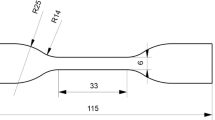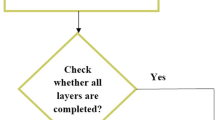Abstract
Rapid Prototyping (RP) is a method used everywhere from the entertainment industry to healthcare. Layer orientation is an important aspect of the final product. The objective of this research was to evaluate the effect of layer orientation on the mechanical strength and toughness of a polymer. The polymer used was a combination of two materials, ZP 130 and ZB 58, fused together in the Z Corporation Spectrum Z510 Rapid Prototyping Machine. ZP 130 is a powder composed of vinyl polymer (2-20%), sulfate salt (0-5%), and plaster that contains <1% crystalline silica (50-95%). ZB 58 is a liquid composed of glycerol (1-10%), preservative (sorbic acid salt) (0-2%), surfactant (<1%), pigment (<1%), and water (85-95%). After removal from the machine the samples were sealed with Z bond 101 which is Beta-methoxyethyl cyanoacrylate (60-100%). The layer orientations studied were the crack arrestor, crack divider, and short transverse with various combinations of the three, for a total of seven orientations. The mechanical strength was evaluated using tensile testing and three-point bend testing. The toughness was evaluated by Izod impact testing. Five samples for tensile testing and three-point bend testing as well as 15 samples for the Izod impact test for each of the seven orientations were made. The total number of samples was 175. The crack arrestor orientation was the strongest main orientation for the tensile and three-point bend test. Weibull analysis was done on the Izod impact testing due to high variation in the results for the crack arrestor and short transverse directions. It was found that the layer orientation and surface roughness played a significant role in the penetration of the Z bond 101 coating and in the overall strength of the samples.



















Similar content being viewed by others
References
Z Corporation: Material Safety Data Sheet, “ZP™ 130 Powder,” April 2005
Z Corporation: Material Safety Data Sheet, “ZP™ 58 Binder,” June 2005
Technology Supplies Ltd: Material Safety Data Sheet, MSDS No.: 0005. “Z-Bond™ 101 Medium Strength Cryanoacrylate,” 8 August 2005
J.D. Embury, N.J. Petch, A.E. Wraith, and E.S. Wright, The Fracture of Mild Steel Laminates, Trans. Metall. Soc. AIME, 1967, 239, p 114–118
O.S. Es-Said, J. Foyos, R. Noorani, M. Mendelson, and R. Marloth, Effect of Layer Orientation on Mechanical Properties of Rapid Prototyped Samples, Mater. Manuf. Process., 2000, 15(1), p 107–122
Spectrum Z510 Users Manual, http://www.ems-usa.com/pdf/EMS_Z510_brochure.pdf, 2009
Y. Xu, L. Cheng, L. Zhang, D. Yan, and C. You, Optimization of Sample Number for Weibull Function of Brittle Materials Strength, www.sciencedirect.
Acknowledgment
The authors are grateful to Dr. R. Noorani of the mechanical engineering department at Loyola Marymount University for allowing them to use the Rapid Prototype equipment.
Author information
Authors and Affiliations
Corresponding author
Rights and permissions
About this article
Cite this article
Vega, V., Clements, J., Lam, T. et al. The Effect of Layer Orientation on the Mechanical Properties and Microstructure of a Polymer. J. of Materi Eng and Perform 20, 978–988 (2011). https://doi.org/10.1007/s11665-010-9740-z
Received:
Revised:
Published:
Issue Date:
DOI: https://doi.org/10.1007/s11665-010-9740-z




